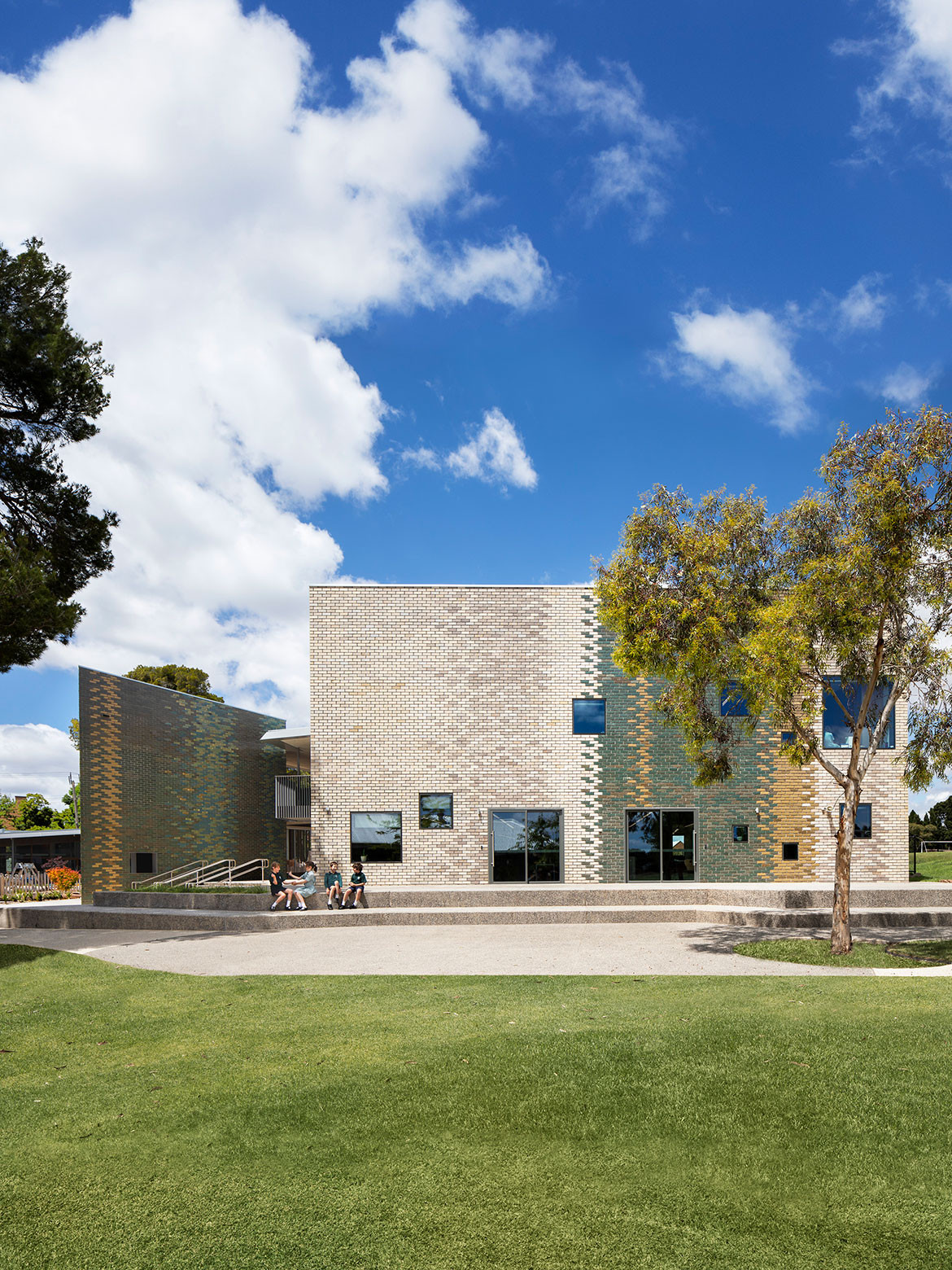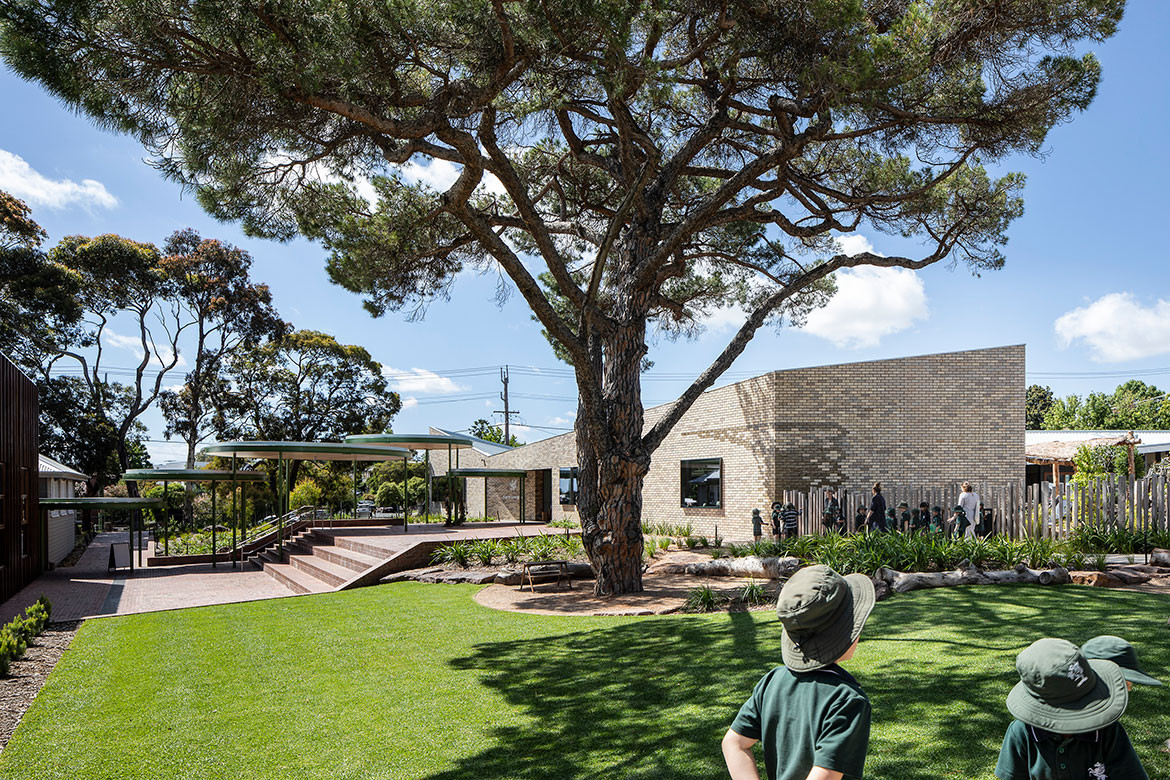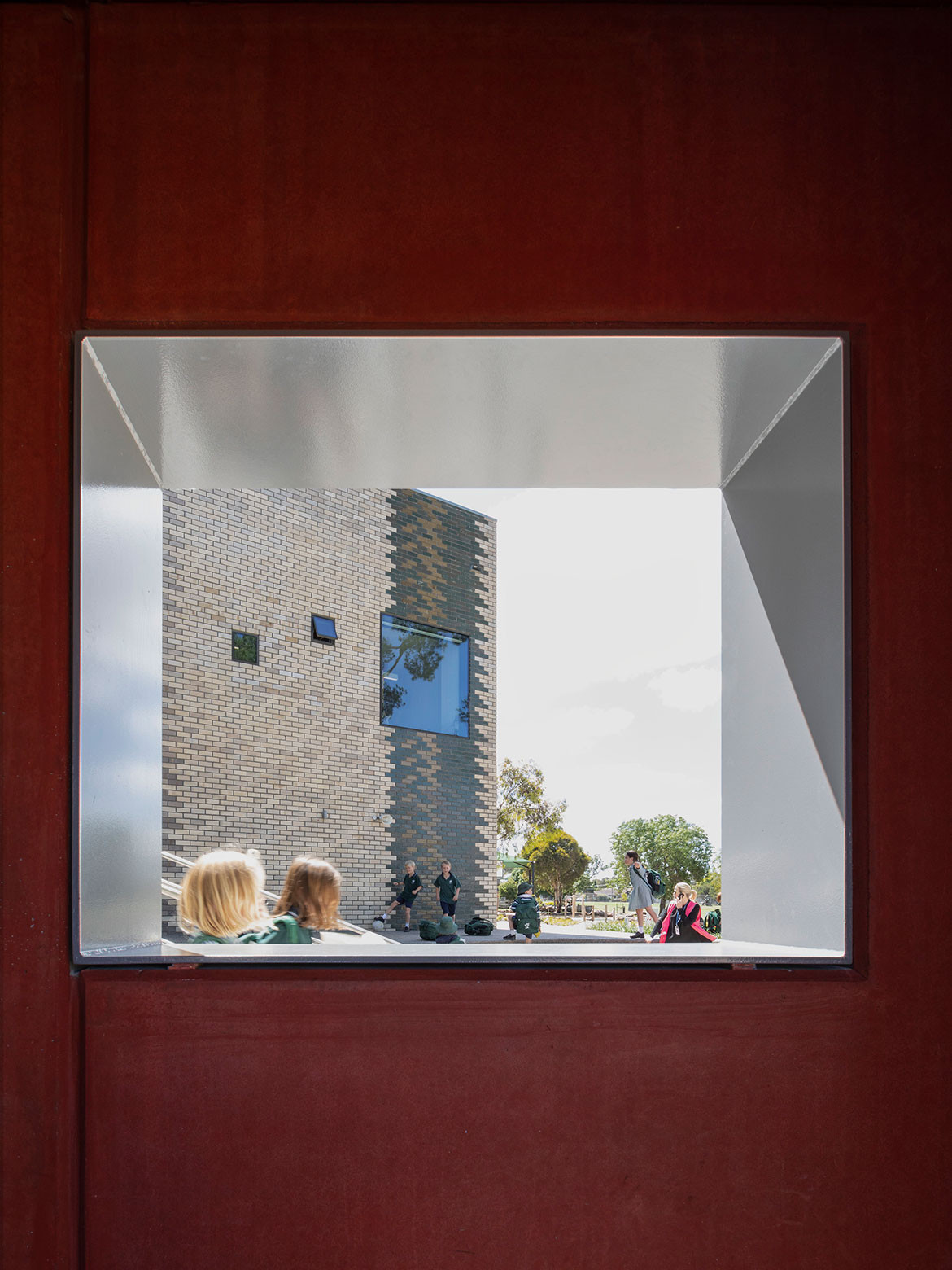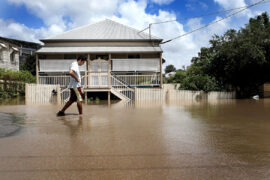John Wardle Architects creates a constructive learning environment to cater for pedagogical advancements at Geelong College Junior School.

If you’ve ever wondered what the architectural embodiment of the proverbial phrase “it takes a village” might look like, the answer lies within the recently completed Geelong College Junior School by John Wardle Architects.
Comprising a new junior school, early learning centre and multipurpose hall for one of Australia’s oldest schools, the project is the first to emanate from JWA’s ongoing masterplan for the independent, co-education boarding and day school. The purpose of the 30-year strategic plan is to bring Geelong College’s facilities into the 21st century for student learning and well-being. Originally established in 1861, the school’s existing structures were no longer able to host present day student population growth and pedagogical requirements.

The design draws upon the school’s pedagogies, which lean into the constructivist Reggio Emilia educational philosophy — a school of thought rooted in discovery based learning. A critical aspect of the approach considers the environment to be “the third teacher”. The new school arrangement resembles a miniature town plan, in which the multipurpose hall becomes the town hall, while squares, plazas and landscaped courtyards are sequenced in between the buildings.
The new school buildings are shaped to provide the optimal amenity and aspect for the learning ateliers. A zig zag plan form brings south light into all the learning environments and provides long views across the playing fields. The form retains the existing site trees, and promotes natural cross ventilation of the spaces. The new school building is sequentially zoned creating year level communities, each with their own identity.


Each of the learning communities are linked by a continuous verandah, promoting outdoor spaces for learning, gathering and play. Within the early learning years, externalised bag areas and dining spaces foster year level belonging. Outdoor teaching spaces and kitchens provide reference points along the veranda in the primary levels.
Vertical connections within the verandah are reinforced through voids and two staircases, one embedded within the plan and another expressed as a clocktower. Here a balcony landing allows games and stories to be shared. The central landscaped courtyard is shared between year levels, creating a soft and rich inner world characterised by the stand of existing trees and fall in grade.


The exterior fabric resembles a “defensive” city wall. The shifting forms and colourful brickwork provide playful protection from the traffic noise to the east and severe westerly winds. A set of deep windows punctuate the wall, its inside face is made deliberately deep containing the shared equipment, art stores and resources. Deep sills create a series of nooks configured to the scale of the children.
The colours and textures of the bricks have been developed specifically for this project and references the landscape tones of the campus. Subtle greens, and greys camouflage with the native trees.


INDESIGN is on instagram
Follow @indesignlive
A searchable and comprehensive guide for specifying leading products and their suppliers
Keep up to date with the latest and greatest from our industry BFF's!

Rising above the new Sydney Metro Gadigal Station on Pitt Street, Investa’s Parkline Place is redefining the office property aesthetic.

CDK Stone’s Natasha Stengos takes us through its Alexandria Selection Centre, where stone choice becomes a sensory experience – from curated spaces, crafted details and a colour-organised selection floor.

Gray Puksand’s adaptive reuse of former Melbourne office into Hester Hornbrook Academy’s new City Campus shows how architecture can support wellbeing, connection and community.

Leading by design, Erik L’Heureux has recently taken the helm of Monash University’s Department of Architecture, and so a new and exciting journey begins for both L’Heureux and the University.
The internet never sleeps! Here's the stuff you might have missed

CDK Stone’s Natasha Stengos takes us through its Alexandria Selection Centre, where stone choice becomes a sensory experience – from curated spaces, crafted details and a colour-organised selection floor.

David Gole, principal at leading climate-resilient design practice JDA Co., comments on the intersection between heritage and climate in architecture.